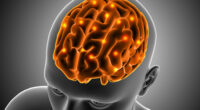Stroke is a leading cause of disability worldwide, but with effective rehabilitation, many stroke survivors can regain significant function and improve their quality of life. Rehabilitation programs vary by country, reflecting different healthcare systems and resources. This blog explores stroke rehabilitation in the USA, UK, and Canada, highlighting similarities and differences in their approaches.
Stroke Rehabilitation in the USA
In the United States, stroke rehabilitation is a critical component of stroke recovery, involving a multidisciplinary approach. The process typically begins in the hospital and continues through various stages of care.
Acute Rehabilitation: Immediately following a stroke, patients may receive intensive rehabilitation in specialized inpatient facilities. These centers offer comprehensive physical, occupational, and speech therapy services tailored to the individual’s needs.
Outpatient Rehabilitation: After discharge from inpatient care, many patients continue therapy on an outpatient basis. This phase focuses on refining skills and achieving greater independence in daily activities.
Home-Based Rehabilitation: Home-based rehabilitation services are available for those unable to travel to outpatient facilities. Therapists visit patients at home, providing personalized care and helping them adapt to their living environment.
Technological Advances: The USA leads in integrating technology into rehabilitation. Innovations like robotic-assisted therapy, virtual reality, and telerehabilitation are increasingly used to enhance recovery.
Insurance and Access: Access to rehabilitation services can vary based on insurance coverage. Medicare, Medicaid, and private insurance plans typically cover rehabilitation, but out-of-pocket costs can still be significant for some patients.
Stroke Rehabilitation in the UK
The United Kingdom’s National Health Service (NHS) provides a structured approach to stroke rehabilitation, ensuring all patients receive care based on clinical guidelines.
Early Supported Discharge (ESD): A hallmark of stroke rehabilitation in the UK, ESD allows patients to return home sooner while still receiving intensive rehabilitation services. This approach has been shown to improve outcomes and patient satisfaction.
Community-Based Rehabilitation: Patients often receive rehabilitation services in their communities after the acute phase. Multidisciplinary teams, including physiotherapists, occupational therapists, and speech and language therapists, work collaboratively to support recovery.
Stroke Units: Specialized stroke units in hospitals provide acute care and initial rehabilitation. These units are staffed by experts in stroke care and equipped with the latest technology to optimize patient outcomes.
Stroke Associations and Support Groups: Organizations like the Stroke Association offer additional resources, including information, support groups, and advocacy for stroke survivors and their families.
NHS Funding: The NHS funds rehabilitation services, ensuring that all patients have access to necessary care without direct costs, though availability and quality can vary by region.

Stroke Rehabilitation in Canada
Canada’s healthcare system emphasizes comprehensive stroke rehabilitation, guided by national standards and best practices.
Integrated Stroke Units: Many hospitals have integrated stroke units that provide acute care and initiate rehabilitation. These units ensure continuity of care from the moment of admission through discharge.
Rehabilitation Facilities: Specialized rehabilitation hospitals and outpatient clinics offer various services, including physiotherapy, occupational therapy, and speech therapy. These facilities aim to maximize recovery and help patients achieve their personal goals.
Community and Home-Based Services: Community health services and home-based rehabilitation programs are crucial in continuing care post-discharge. These services help patients adapt to their environments and maintain progress.
Research and Innovation: Canada is known for its strong focus on research and innovation in stroke rehabilitation. Institutions like the Heart and Stroke Foundation fund research initiatives and promote best practices.
Universal Healthcare: Funded by the government, Canada’s healthcare system ensures that all citizens can access rehabilitation services without direct payment, although wait times and service availability can vary.
Conclusion
Stroke rehabilitation is vital for recovery and quality of life for stroke survivors in the USA, UK, and Canada. While each country has unique approaches shaped by its healthcare systems, all emphasize the importance of early, multidisciplinary, and patient-centered care. Advances in technology and research continue to enhance rehabilitation outcomes, offering hope and improved prospects for stroke survivors worldwide. Whether through intensive inpatient programs, community-based services, or innovative home-based care, the ultimate goal remains the same: to help stroke survivors regain independence and lead fulfilling lives.









